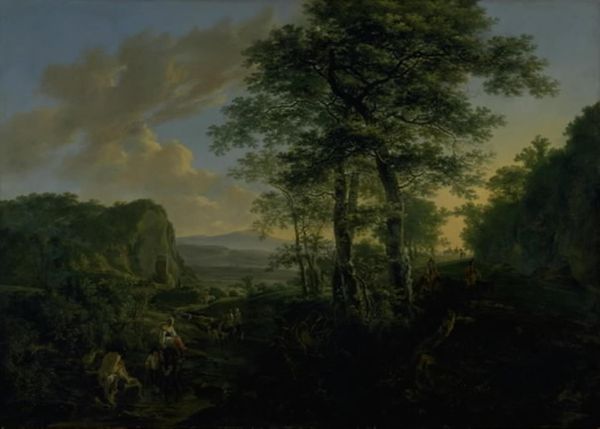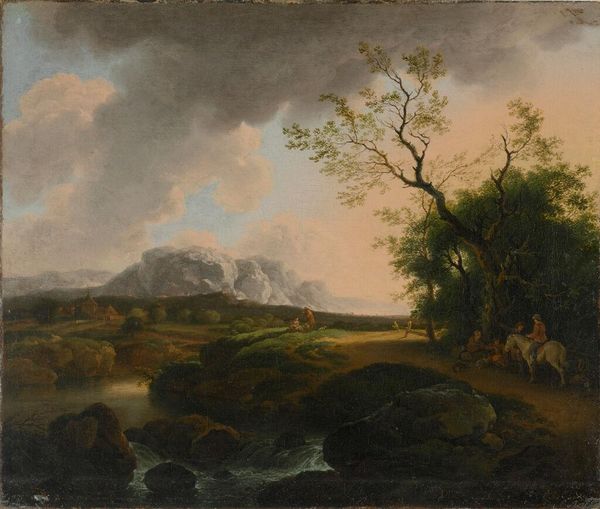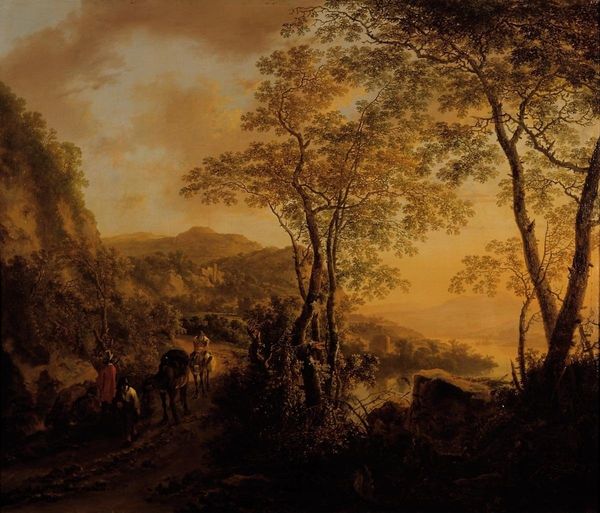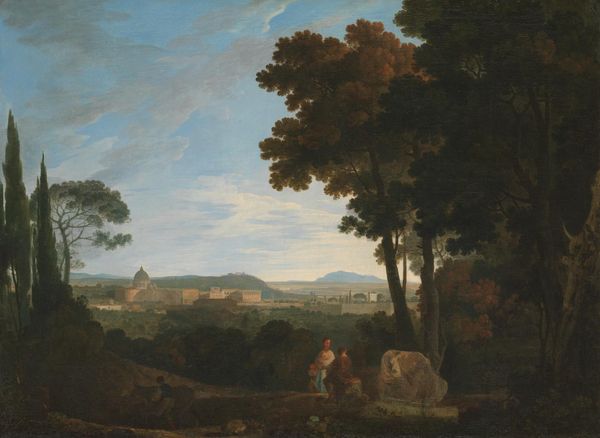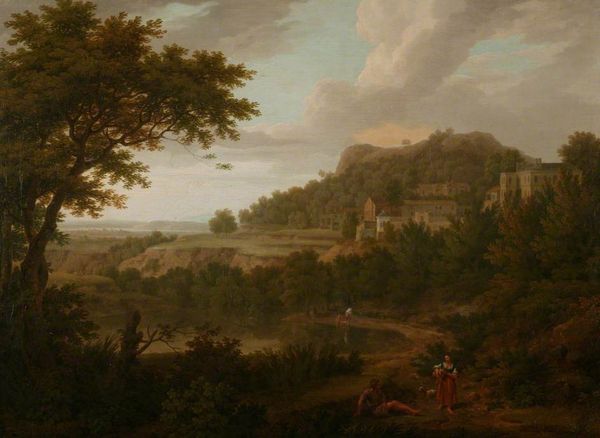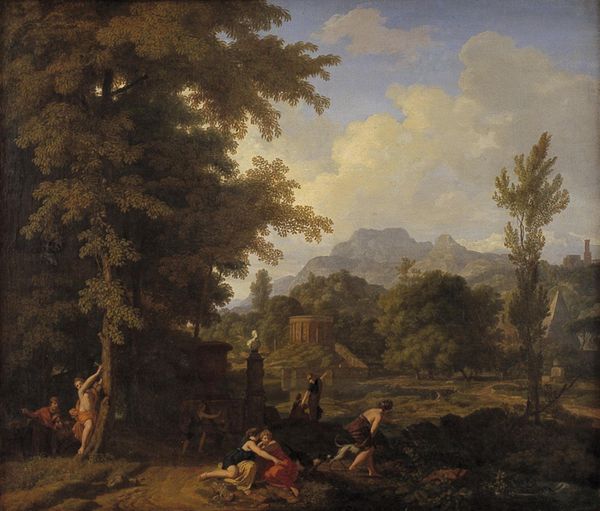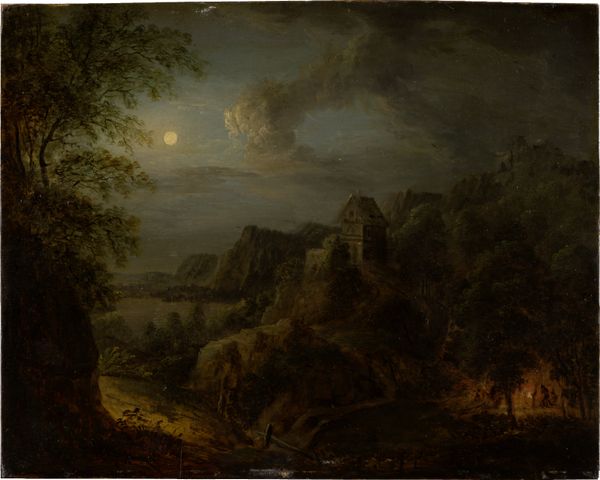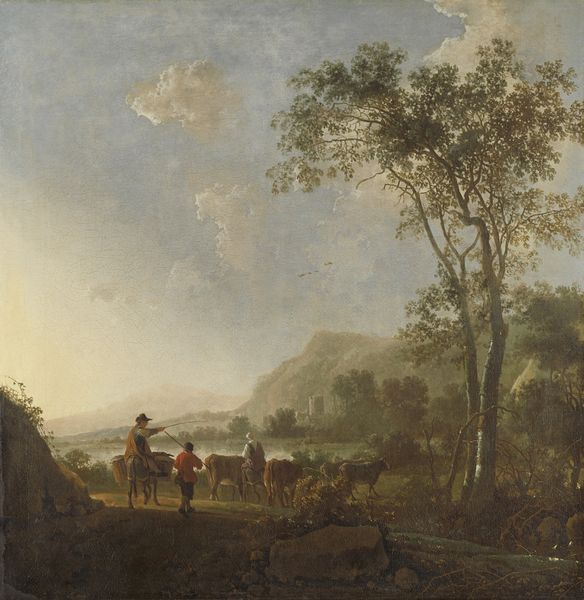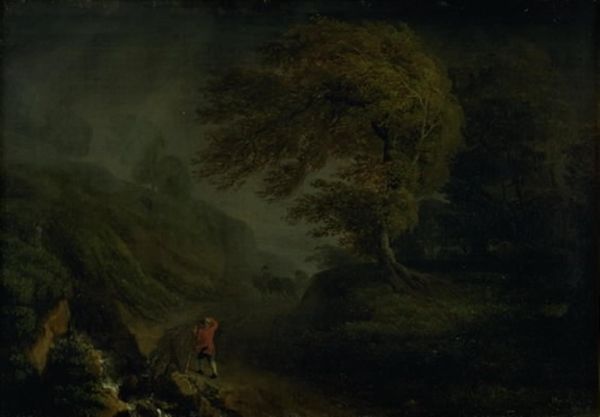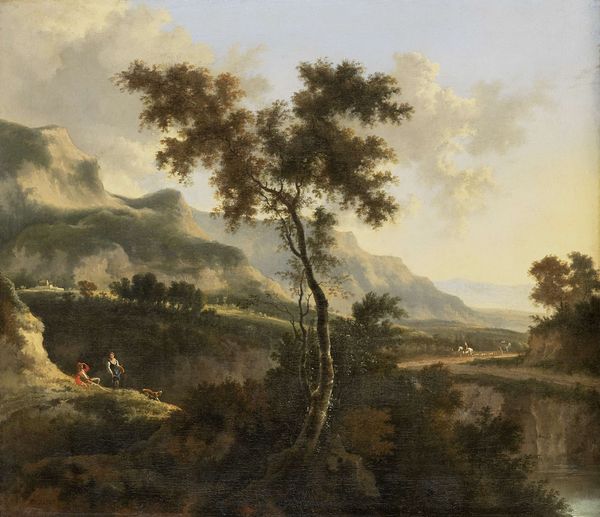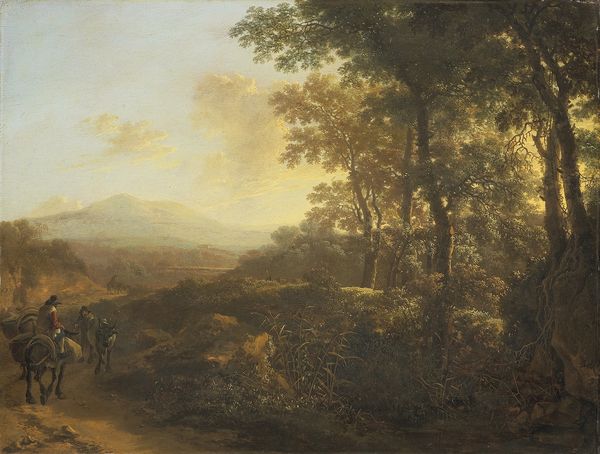
plein-air, oil-paint, canvas
#
baroque
#
plein-air
#
oil-paint
#
landscape
#
figuration
#
canvas
#
underpainting
#
fog
#
painting painterly
#
mist
Dimensions: 31.5 cm (height) x 37.5 cm (width) (Netto)
Curator: This landscape by Johannes Glauber, titled "Southern Mountain Scenery", was likely painted sometime between 1661 and 1726. He worked with oil paint on canvas to create this arresting vista. What springs to mind when you first see it? Editor: Hmm, drama, and a touch of foreboding, like something significant is about to happen or perhaps just has. It has that characteristic Baroque tenebrism… Curator: Exactly. There’s a tension here, wouldn’t you agree? Despite the rather traditional landscape elements—the rolling hills, the figures in the foreground—there's a distinct moodiness created by the painterly rendering of light and shadow. Almost stage lighting, you could say! Editor: Precisely! That play of light and shadow, what art history sometimes calls ‘chiaroscuro,’ highlights not just the contours of objects, but also broader power dynamics at play. It calls into question who benefits from visibility and who remains hidden or obscured. In that sense, visibility becomes a question of power. Who gets seen, and by whom? Curator: So you think that applies even here? With those barely-there figures wandering amidst the scenery? They seem so small, insignificant. It makes me wonder if this work could perhaps be about man's insignificance versus nature’s overpowering presence... Editor: Possibly. Landscape paintings from this period frequently reinforced hierarchies between humankind and the environment, positioning nature as something to be mastered. This work does capture a humbling vastness that throws humanity's impact into question, so the contrast in scale is worth paying attention to. Curator: It feels almost theatrical, this landscape. The mist, the painterly touches... as though it’s all a backdrop to a larger, unspoken narrative. A rather moody dream, perhaps, that hangs suspended between what is real and what is conjured. It does invite us to explore these misty ideas, no? Editor: Yes. The very act of creating the painting embodies this sense of theatre: the composition, the light, even the brushstrokes work together to guide the viewer's gaze. It brings attention to how such landscapes participated in legitimizing—even naturalizing— specific historical roles through visual codes that linger still today. Curator: You’re right, and something that seems like simply landscape, perhaps shows a darker, far wider implication... Fascinating. Thanks for expanding my perspective!
Comments
No comments
Be the first to comment and join the conversation on the ultimate creative platform.
